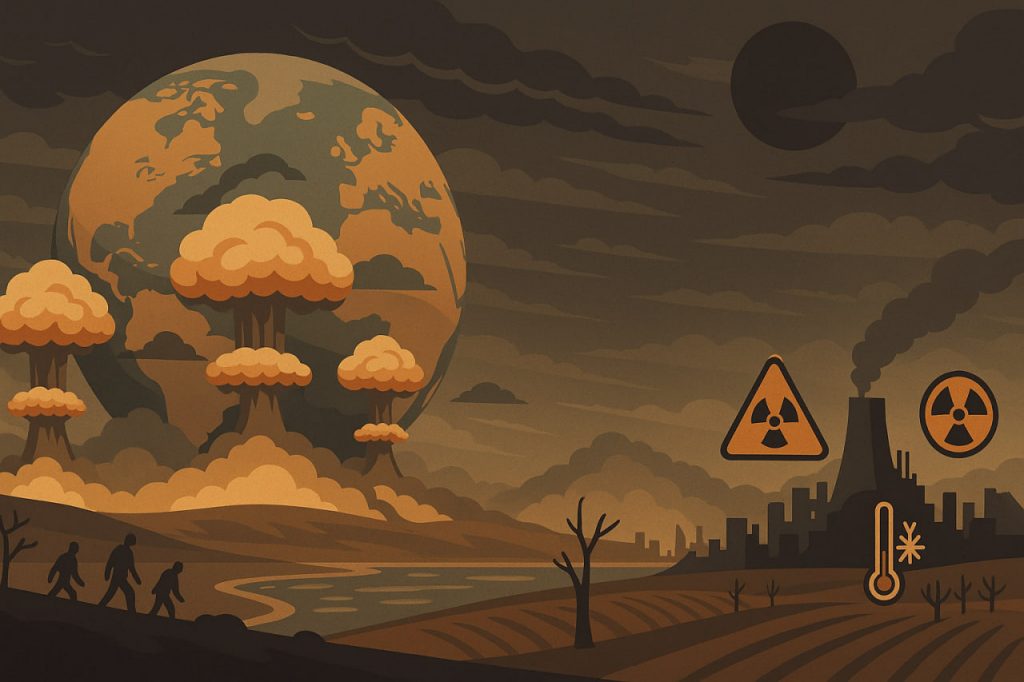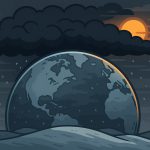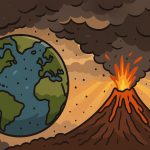The idea of using all nuclear weapons ever created is one of the darkest scenarios imaginable for humanity. While the chances of it happening are low, understanding the consequences helps highlight why nuclear disarmament and global cooperation are so crucial. Even a limited nuclear war would be catastrophic — but a full-scale detonation of all global arsenals could alter life on Earth for centuries.
Immediate Effects of a Global Nuclear Exchange
The world’s nations together possess around 12,500 nuclear warheads, with thousands ready for launch within minutes. If all were detonated, the first moments would bring destruction beyond anything in human history.
- Explosions and shock waves: Each detonation releases immense energy. Cities and infrastructure within tens of kilometers would be flattened instantly.
- Thermal radiation: Intense heat would ignite fires across vast urban areas, causing widespread wildfires and firestorms.
- Radiation: Intense bursts of gamma and neutron radiation would kill millions instantly and cause long-term radiation sickness in survivors.
- Electromagnetic pulse (EMP): High-altitude detonations could disable most of the world’s electronics and power grids within seconds.
Within hours, hundreds of millions would perish. Those who survive the blasts would face an environment rapidly turning hostile.
Fallout and Radioactive Contamination
The explosions would lift massive amounts of radioactive dust into the atmosphere. This fallout would settle back over weeks, contaminating food, water, and air worldwide. People in regions far from the detonations would still experience radiation exposure, cancers, and genetic mutations.
Radioactive particles would also poison ecosystems, killing wildlife, pollinators, and plants. Even the oceans would suffer from acidification and radioactive runoff.
The Onset of “Nuclear Winter”
One of the most dangerous long-term effects would be nuclear winter — a drastic global cooling caused by smoke and soot from burning cities rising into the stratosphere.
Scientists predict that:
- Global average temperatures could drop by 10–20°C.
- Sunlight would be blocked, plunging much of the planet into semi-darkness for months.
- Crop failures would follow as photosynthesis nearly stops, leading to global famine.
- Rainfall patterns would collapse, bringing drought to some regions and cold floods to others.
Even small-scale nuclear wars are estimated to kill billions through starvation within a few years; a full exchange could make agriculture impossible for a decade or more.
Collapse of Civilization
Beyond physical destruction, the social fabric of civilization would disintegrate:
- Governments would collapse; communication and trade would cease.
- Energy, food, and medical supplies would run out.
- Surviving populations would face famine, disease, and violence over remaining resources.
The surviving humans would likely revert to isolated, small communities struggling for survival in a toxic and freezing world.
Environmental and Biological Effects
Nuclear detonations would wipe out many species instantly and push countless others to extinction through climate disruption and radiation. Forests would die, oceans would lose oxygen, and the global ecosystem could take thousands of years to recover.
Some forms of life — bacteria, fungi, and insects — would likely survive and slowly adapt to the new, colder, irradiated world.
Could Humanity Survive?
Theoretically, small groups of humans in isolated or underground environments could survive, especially in the Southern Hemisphere. However, the world they inherit would be harsh and unstable, with minimal biodiversity, no infrastructure, and limited resources. Humanity might endure, but civilization as we know it would likely end.
Lessons and Prevention
The true purpose of understanding this scenario is not fear, but prevention. The world’s survival depends on avoiding escalation and maintaining strict control of nuclear arsenals. Key strategies include:
- Diplomacy and treaties to reduce stockpiles.
- International cooperation to prevent accidental launches.
- Education and awareness to sustain a global culture of peace.
Interesting Facts
- The total yield of all nuclear weapons today equals about 3,000,000 Hiroshima bombs.
- Even a “limited” nuclear war between India and Pakistan could lower global temperatures by 5°C.
- The term “nuclear winter” was first introduced in the 1980s by scientists including Carl Sagan.
Glossary
- Fallout — radioactive particles that settle to Earth after a nuclear explosion.
- EMP (Electromagnetic Pulse) — a burst of electromagnetic radiation that disables electronics.
- Nuclear winter — long-term global cooling caused by smoke and soot blocking sunlight after nuclear war.
- Gamma radiation — high-energy radiation harmful to living tissue.
- Mutations — permanent changes in DNA that can cause disease or evolution.


